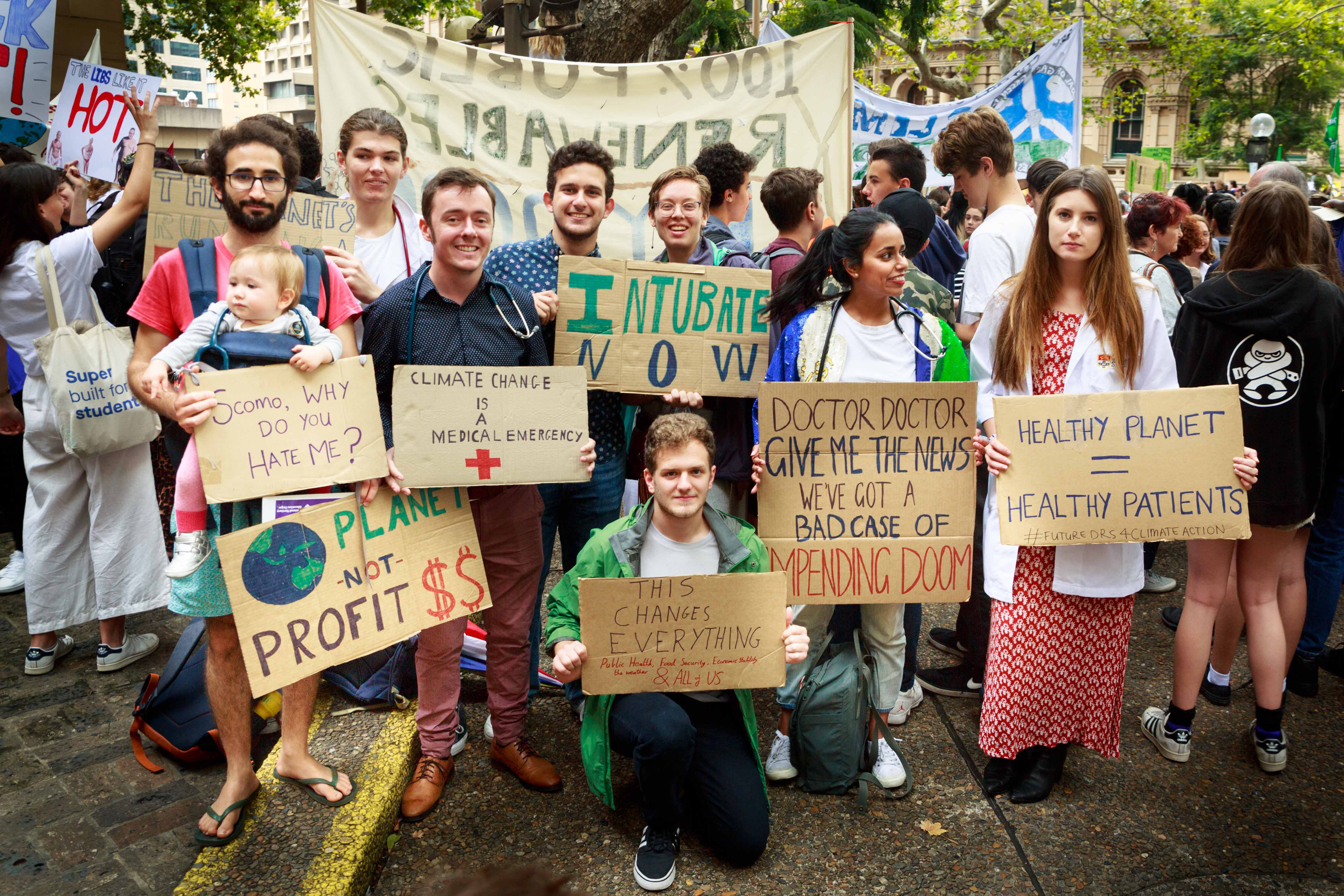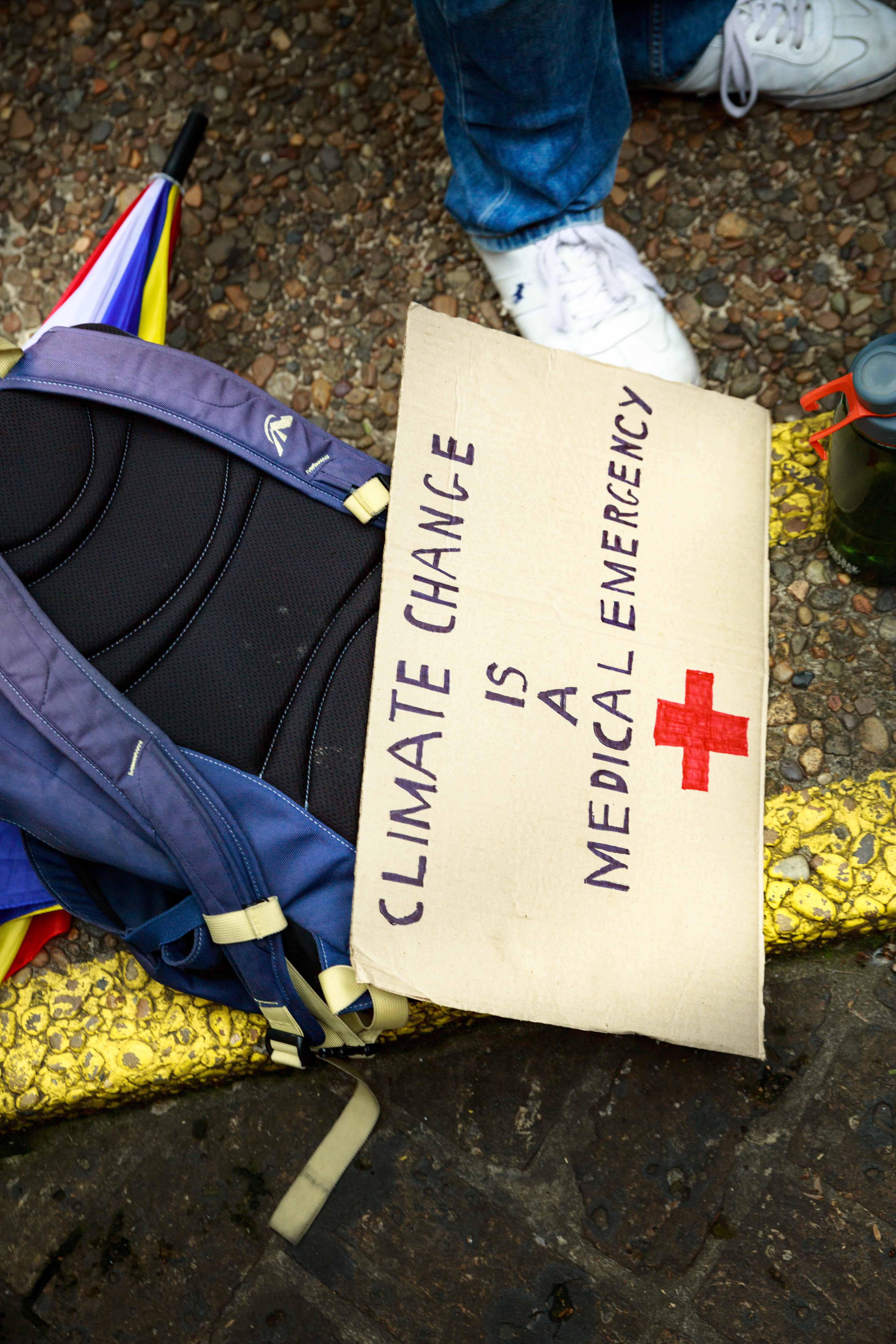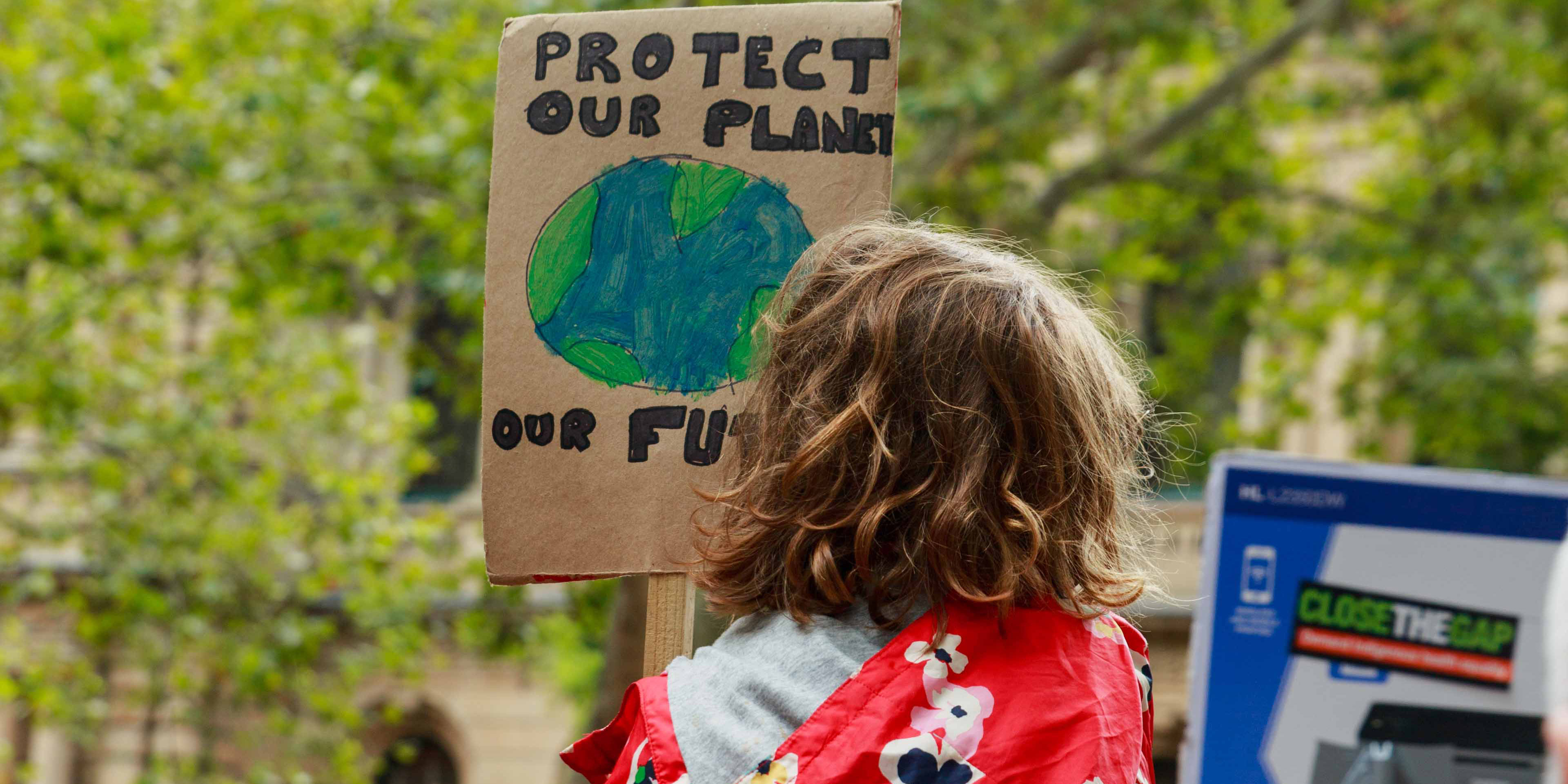Doctors treating patients for heat injury and allergies say we are already managing the consequences of rising global temperatures
It was an intense, dry heat that was overwhelming. Going outside was like opening an oven door. Even inside the hospital, unaccustomed to such temperatures, the conditions weren’t much better.
Patients and staff alike were uncomfortable and increasingly exhausted trying to function in the oppressive conditions. And it went on day after day. For almost a week the Celsius kept hitting 40, with no sign of relenting.
Sounds like a scene from an apocalyptic novel, doesn’t it?
In fact, this was the reality for a major hospital in Tasmania during the summer of 2017.
This is the face of global warming in Australia.
The Australian Bureau of Meteorology (BOM) recently revealed that January 2019 was the hottest month on record in Australia’s history. Temperatures were almost three degrees above the long-term average.
The heatwave conditions affected most of the country and broke records for both duration and daily temperatures.
Global warming has increased global temperatures by almost 1°C since the industrial revolution in the 1880s, according to NASA.
And, two thirds of this warming has happened in the last 45 years.
Projections published by the CSIRO predict average temperatures will increase across all seasons in Australian cities in the next decade.
But these days aren’t just hot, they also represent a major health challenge.
According to one study, there were about 4500 deaths caused by extreme heat in Australia between 1900 and 2011. These deaths accounted for about 55% of all other fatalties from natural disasters in the same period. The other natural disasters included floods, cyclones, bush fires, lightning storms and landslides.
TAKING ITS TOLL
Many countries that have experienced prolonged heatwaves in the last decade and demonstrated the burden such heat has on the population’s health. During the heatwave in Russia in August 2010, approximately 6,000 more people died than during the same month in the previous year.
Moscow was well-equipped for long, bitter winters, said Professor Kingsley Faulkner, chair of Doctors for the Environment Australia (DEA), but the city was completely unprepared for such a hellish summer.
“Australia has some advantages as a wealthy country, but nonetheless, we’ve seen the consequences of prolonged heat,” he said.
The Black Saturday bushfires which engulfed Victoria in February of 2009 caused 173 direct fatalities. Later, Victoria’s health authorities estimated the heatwave preceding the fires might have contributed to an additional 374 deaths.
The groups most at risk during heatwaves are older people, patients with chronic diseases and children, according to DEA’s ‘No time for games’ report.
“[Children’s] different and more sensitive physiological, behavioural, and developmental requirements increase their exposure and risk of both acute and long-term adverse impacts on their health,” the DEA states.
At its worst, prolonged heat exposure leads to the classic symptoms of heat stroke or hyperthermia, namely diaphoresis, vomiting, tachycardia, and muscular spasm.
If left untreated, the condition can progress rapidly – and dangerously.
But it’s not only direct heat which can cause harm.
Hot weather also provides the perfect breeding ground for bacteria and increases the incidence of food-borne diseases such as salmonella, according an Australian study published in the BMJ. Salmonellosis directly caused eight deaths in Australia in 2013.
Cases are more common in summer months, or when temperatures rise five degrees above the monthly mean temperature, according to the study.
“The influence of weather on salmonellosis is not always immediate but is most often delayed after a weather event,” the authors wrote.
These delays are because hot weather may facilitate the colonisation of salmonella in chicken, but people don’t start getting sick some time later, after they’ve eaten the infected chicken.
The study shows foodborne illnesses, including salmonellosis cost Australia an estimated $1.25 billion annually in both health and economic costs.
And food poisoning isn’t the only heat-related illness taking a toll on the health budget according to Dr David King, a Queensland GP.
Pollen allergies are also occurring more frequently in Australia with unpredictable weather affecting the growing patterns of allergenic plants.
THE NEVER-ENDING SUMMER?
The allergy season used to be fairly predictable, says Dr King, who has a special interest in allergies.
In the past, the allergy season was dependent on geography, with Sydney typically affected between October and January, and Queensland having its allergy season slightly later in the year.
Not anymore.
Now, the allergy season is no longer limited to the spring months, says Dr King. “I can’t actually predict when I’ll see rhinitis patients,” he says.
With over three decades of experience as a GP, Dr King is finding it increasingly difficult to know when to suggest preventative measures to patients who present with allergic rhinitis.
In Australia, most rhinitis is due to the nation’s abundance of grass species, such as ryegrass.
Global warming is causing major changes to ecosystems.
While some plant species are in decline due to the heat, other species – particularly weeds and grasses that cause allergies and asthma – are thriving.
Associate Professor Paul Beggs, an environmental health scientist at Macquarie University, recently reviewed research done in relation to the impacts of climate change on allergic reactions. He found many studies from the US and Europe showed climate change was already increasing the amount of pollen production and increasing the atmospheric pollen concentration.
Similarly, increases in fungal spore production, mould growth and stinging insect allergens related to climate change could put people in contact with more allergens, he said.
“All these changes could affect allergic diseases, in particular allergic respiratory diseases such as allergic asthma and allergic rhinitis,” Professor Beggs said.
In addition, extreme weather events, such as thunderstorms, have been known to cause further complications for people with allergic and respiratory disease. This was the case in Melbourne in November 2016 when 10 deaths occurred due to unforeseen asthma attacks directly related to a storm system.
The thunderstorm caused grass pollen grains to be swept up into the storm clouds. As the grains absorbed the moisture of the storm, they burst open releasing a large amount of smaller allergenic particles, small enough to be inhaled.
This proved dangerous and even lethal to some people.
The fifth report issued by the Intergovernmental Panel on Climate Change says increased temperatures will impact the frequency of extreme weather events including heavy rain and storms. Warm air carries more moisture, making short bursts of heavy rainfall more likely.
This increase in heavy rainfall, in combination with pollen in the atmosphere, could leady to deadly consequences.
Dr King says it’s important for doctors and policy makers to seriously look at long-term measures to the reduce global warming and its impact on the incidence of allergy. Australia already has a very high rate of pollen allergies, with around a third of adults experiencing allergic rhinitis.
Not dealing with the root causes of the problem will cost more in the long run, he says.
TOP-DOWN APPROACHES
On a government level, there have already been some attempts to halt the progression of climate change and its effects.
In 2015, 174 countries and the European Union, ratified the Paris Agreement in an attempt to keep overall global warming to well below two degrees Celsius.
If global temperatures were to rise any more than two degrees it would likely cause catastrophic and irreversible planetary damage, the agreement stated.
The AMA has been pressuring the Australian government to work towards these international targets. In their revised “Climate change and human health” document, the association said good climate policies can have public health benefits beyond their intended impact.
“These health benefits should be promoted as a public health opportunity, with significant potential to offset some costs associated with addressing climate change,” the AMA document states.
Some of these flow-on benefits to health include an improvement in air quality, which in turn would improve respiratory health.
Other medical organisations are also taking the initiative to divest their money and assets from projects associated with fossil fuels. The Australian Medical Students Association (AMSA) was one of the first to do so in late 2018, calling on the RACGP to follow suit.
Earlier this month, AMSA-affiliated medical students ditched their lectures and took to the streets of Australia to be advocates of health in the #schoolstrike4climate rally.
Fourth-year medical student Keerthi Muvva, the ‘Code Green’ coordinator for AMSA said the association developed the campaign to “educate, engage and inspire students and doctors to talk to their colleagues and the wider community about health consequences of climate change.
“It is unimaginable how many facets of our life climate change is going to effect, whether it is vector-borne disease, air pollution, mental health, food security.
LEADING THE CONVERSATION
GPs are also championing the role of patient advocacy within the debate of climate change. Last month, Dr Tammra Warby, a GP from Queensland, co-authored a declaration for WONCA (The World Organisation of Family Doctors) calling for family doctors of the world to act on planetary health.
The declaration abandons the notion of climate change and replaces it with a conversation about planetary health.
“Planetary health is broader,” Dr Warby said. “It’s looking at how the earth’s natural support systems are being eroded by human activity and how that loops back into health.”
Dr Warby was inspired to do something after the WHO published a statement, saying “climate change is the greatest threat to global health in the 21st century”.
“Everybody treats the environment like it’s separate, but what about trying to care for humans by caring for the environment?” Dr Warby asked.
In the declaration, Dr Warby includes a list of the way GPs can get on board with changing the health of the planet for the better. Firstly, doctors can educate themselves as to how health is linked to the health of the earth.
The second call to action is about becoming a stronger advocate for patients and taking these conversations to the highest levels – government and international communities.
Dr Warby says GPs spend every day advising patients about diet and exercise. Recommending a patient get more physical activity for health reasons could also be sold as a way to cut down their carbon footprint.
It’s giving a patient not one, but two good reasons to change their lifestyle.
“You’re just changing one person at a time when you have such discussion,” Dr Warby said.
Doctors warn asthmatics when there are bushfires or local land clearing, so it’s a natural extension of discussions with these patients to point out how changes in the environment affect their health.
These explicit conversations have the power to mobilise meaningful action, she said.
Since forming in 2001, Doctors for the Environment Australia (DEA) has recruited a multitude of doctors and medical students to work toward their goal of a “healthy planet, healthy people”.
Their activism uses detailed scientific information to make clear to government the links between deteriorating public health and environmental destruction.
According to the chair of DEA, Professor Faulkner, if climate change were a disease, and planet earth were a patient, the diagnosis would have been obvious long ago.
“If I had a medical problem like this and I didn’t take advantage of the evidence and treat the patient for their problem the way they ought to be treated, then I would be regarded as negligent,” he said.




